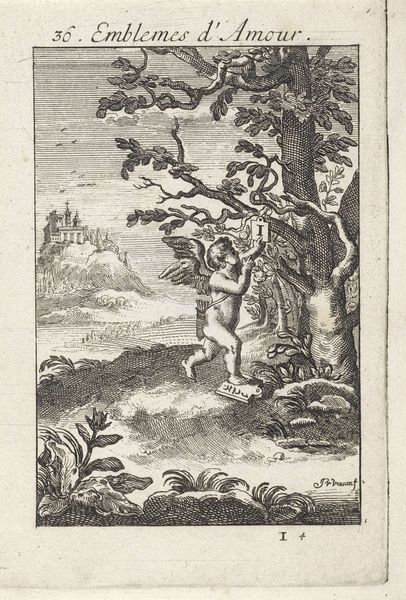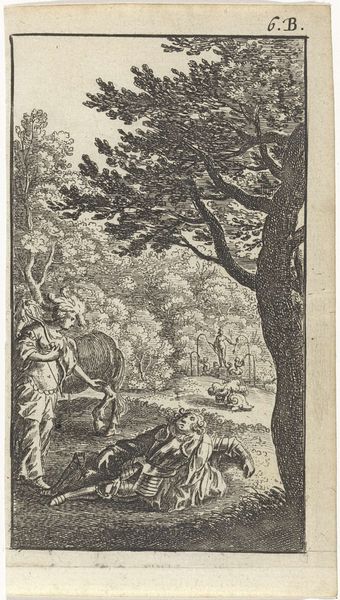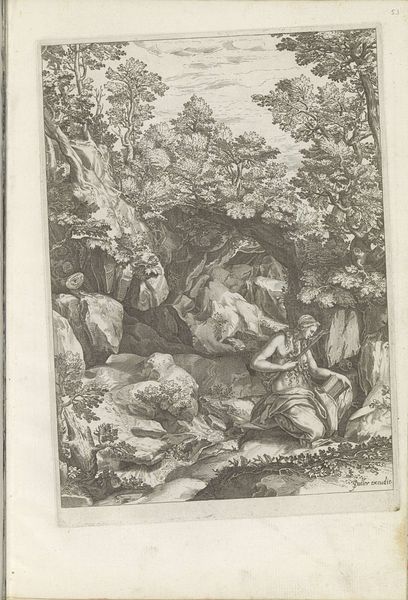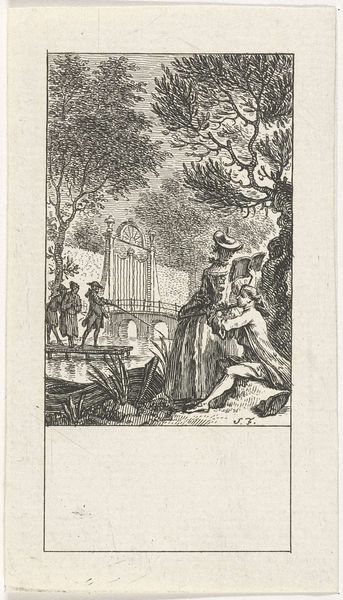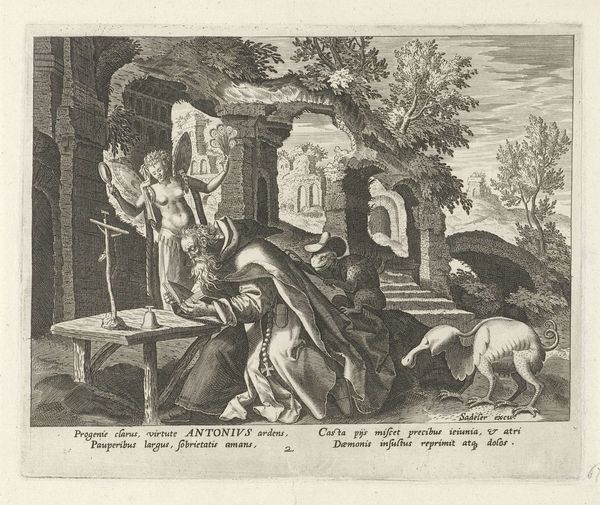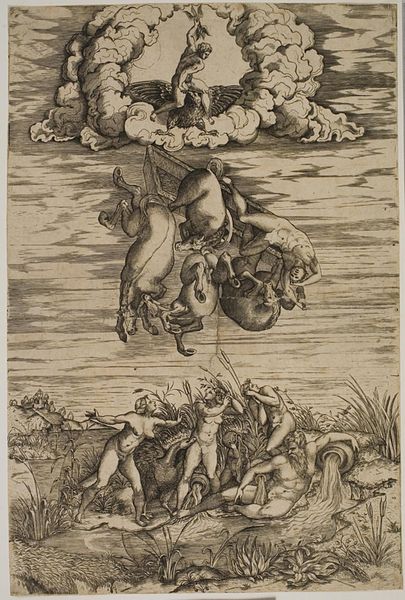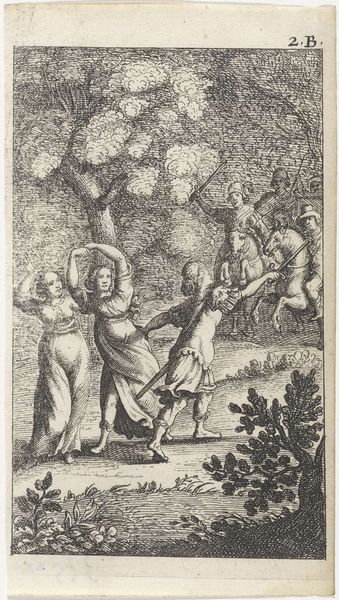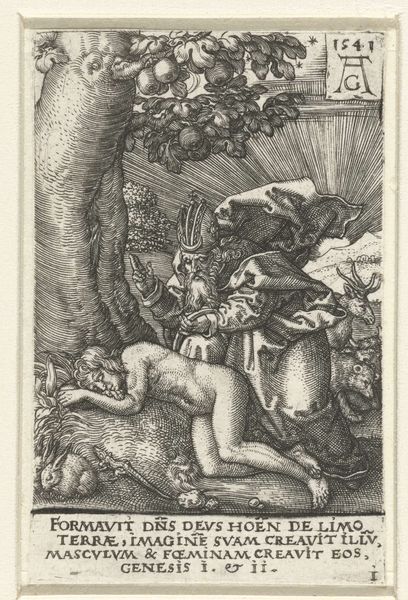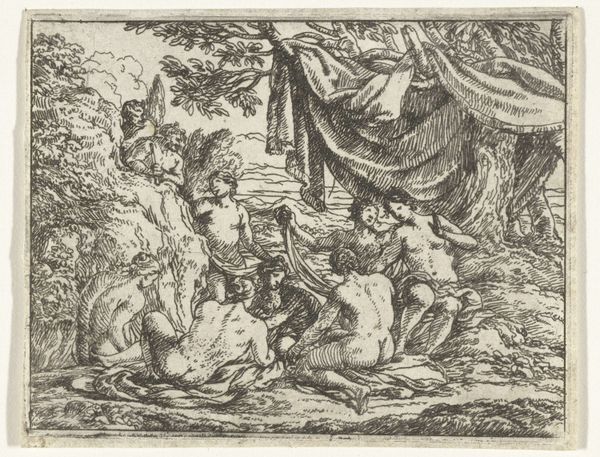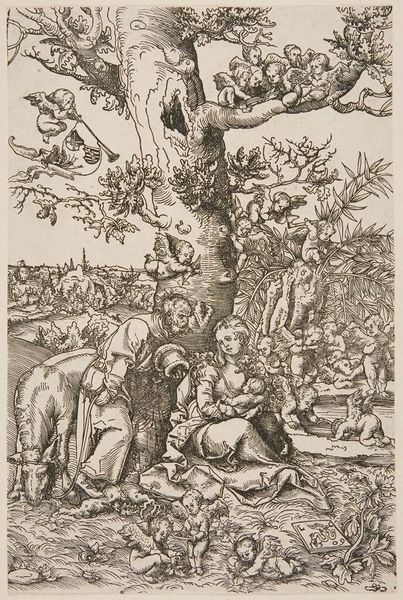
drawing, engraving
#
drawing
#
baroque
#
pen drawing
#
mechanical pen drawing
#
pen illustration
#
pen sketch
#
old engraving style
#
landscape
#
pen-ink sketch
#
pen work
#
genre-painting
#
history-painting
#
engraving
Dimensions: height 131 mm, width 77 mm
Copyright: Rijks Museum: Open Domain
Editor: This is "Jager buigt zich over een liggende vrouw," a pen and ink drawing by Abraham Dircksz. Santvoort, dating back to 1667. I find the composition quite intriguing, almost like a stage setting, but the interaction between the figures feels ambiguous. How do you interpret this work? Curator: This piece is indeed complex, isn’t it? Santvoort places us in a seemingly idyllic landscape, but this tableau invites us to question what’s happening. The title translates to “Hunter leaning over a reclining woman,” which immediately raises issues of power dynamics and gender. Notice how the woman is positioned – passive, asleep perhaps, vulnerable – while the hunter looms over her. Editor: I see that. It definitely changes the mood. Is this something we saw a lot in art from the Baroque period? Curator: Images like this one offer a window into the social anxieties of 17th-century Dutch society. On the one hand, there’s an interest in portraying scenes from everyday life, but on the other hand, the relationship between the hunter and the woman carries undertones of male dominance. Also note the cupid statue looking down from above, perhaps acting as commentary on the figures. Editor: So, it’s not just a simple landscape drawing, but a commentary on gender and power? Curator: Precisely. Consider also how the art market was developing then. Who were the patrons, and what messages were they interested in conveying? These genre scenes are not neutral; they actively participate in shaping our understanding of social roles. Editor: That makes me look at the piece completely differently. Thanks! Curator: Indeed, art always reflects the era in which it was produced, but it can also spark very current conversations. I’m so glad that this inspired a fresh interpretation.
Comments
No comments
Be the first to comment and join the conversation on the ultimate creative platform.
